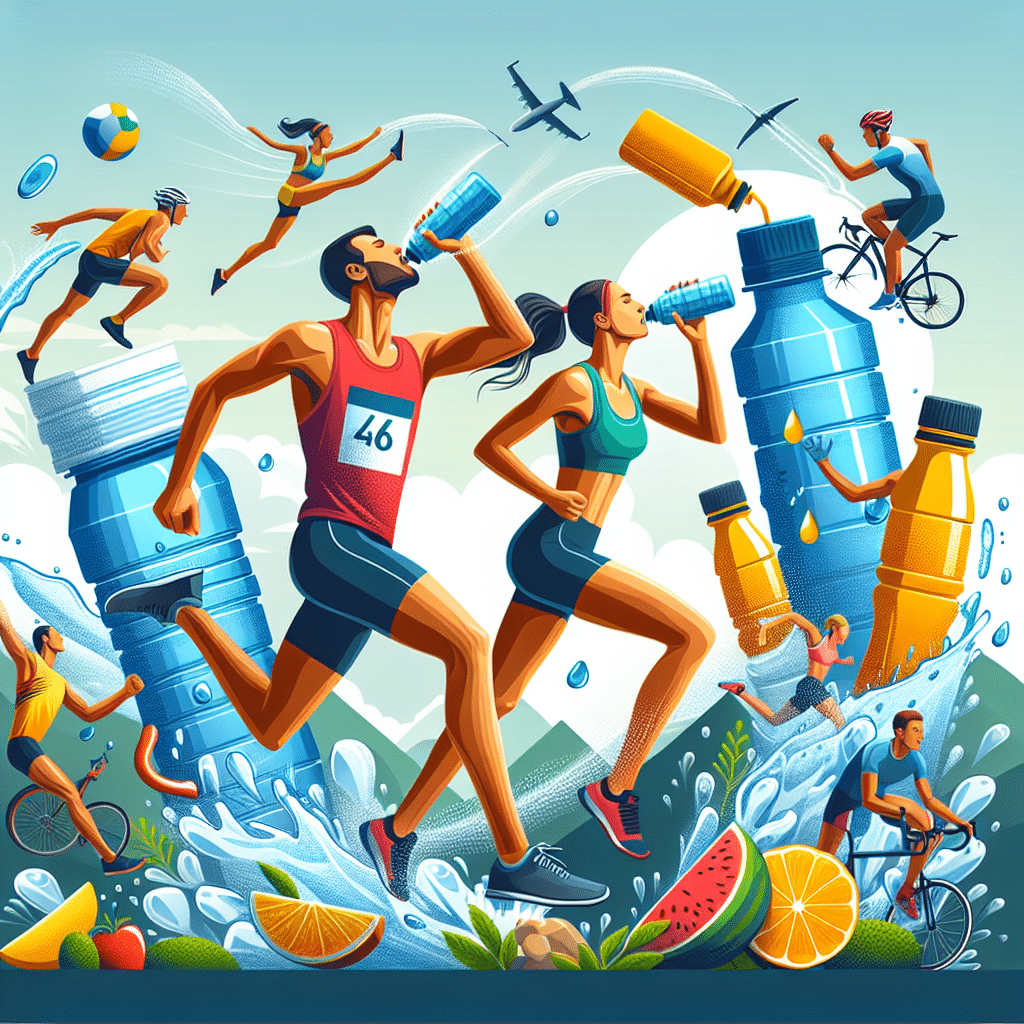Understanding Hydration Needs
Endurance athletes, such as marathon runners, triathletes, and cyclists, often overlook the crucial aspect of hydration. Proper hydration is essential for optimal performance and recovery. The body’s fluid balance plays a vital role in regulating temperature, managing energy levels, and enhancing overall physical performance.
Importance of Hydration
Hydration impacts physical performance significantly. Dehydration can lead to decreased endurance, increased fatigue, lower coordination, and an impaired ability to regulate body temperature. Even a 2% decrease in body weight from fluid loss can adversely affect an athlete’s performance.
Signs of Dehydration
Understanding how to recognize the signs of dehydration is critical for athletes. Common symptoms include:
- Thirst: A primary indicator that your body needs fluids.
- Dark Urine: Concentrated urine may suggest dehydration; aim for light yellow.
- Fatigue: Feeling tired can often be linked to fluid loss.
- Dizziness and Confusion: Severe dehydration can lead to these symptoms.
- Dry Mouth: A clear indication that your body requires hydration.
Fluid Requirements
The fluid needs of endurance athletes can vary significantly based on factors such as duration of activity, environmental conditions, and individual sweat rates. A general guideline is to aim for:
- Before Exercise: Hydrate thoroughly with 16-20 ounces of water or sports drinks.
- During Exercise: Consume 7-10 ounces every 10-20 minutes, adjusting for higher temperatures or prolonged activity.
- After Exercise: Replenish lost fluids with at least 16-24 ounces for every pound of weight lost during activity.
Hydration Strategies Before Training
- Start Early: Begin hydrating at least 48 hours before your endurance event or long training session.
- Monitor Fluid Intake: Maintain consistent fluid intake, aiming for half your body weight in ounces daily.
- Electrolyte Drinks: Integrate electrolyte-rich fluids before intensive workouts, especially during hot conditions.
During Training Hydration Techniques
- Hydration Packs: Using a hydration pack allows athletes to sip fluids consistently on long runs or bike rides.
- Sports Drinks: Choosing the right sports drink can replace electrolytes lost through sweat while providing carbohydrates for energy. Look for drinks containing sodium and potassium.
- Specific Guidelines: Test your hydration strategy during training sessions to find the quantity and type of fluid that works best for your body.
Post-Exercise Recovery Hydration
Rehydrating after a workout is just as crucial as hydrating before and during exercise.
- Fluid Replacement: For every pound lost during exercise, drink approximately 16-24 ounces of water or sports beverages.
- Timing: Initiate rehydration within 30 minutes after finishing exercise, as this can enhance recovery.
- Nutrient Combination: A mix of carbohydrates and proteins in your post-workout drinks can help in recovery, while simultaneously aiding in rehydration.
Dealing with Climate and Conditions
The environment plays a pivotal role in an athlete’s hydration strategy:
- Hot Weather: Increased sweat rates require higher fluid intake. Monitor temperature and humidity and adjust fluid intake accordingly.
- Cold Weather: Cold air can also dehydrate the body. Ensure proper hydration even in colder climates, as dehydration can still occur.
Tracking Sweat Loss
Understanding your sweat rate can help tailor your hydration strategy more effectively. Here are steps to guide you:
- Weigh yourself before and after a workout.
- Calculate the weight difference, converting pounds lost into fluid ounces (1 pound equals approximately 16 ounces).
- Add the amount of fluid you consumed during the workout to this value for total fluid needs.
Key Takeaways on Hydration
- Personalization: Individual hydration strategies depend on body weight, exercise intensity, and environmental factors.
- Hydration Games: Throughout your training cycle, pay attention to how different hydration strategies affect your performance and adjust accordingly.
- Long Sessions: Training sessions exceeding an hour require a focus on electrolytes and carbohydrate replacement.
Hydration Tools and Apps
Employ technology to track hydration through apps that remind you when to drink or monitor your fluid intake. Wearable hydration monitors can also provide real-time feedback on your body’s hydration status.
The Impact of Caffeine and Alcohol
While caffeine is a diuretic, it is safe for most athletes when consumed in moderation. Caffeine can enhance endurance but should not replace hydration.
Alcohol is dehydrating and should be consumed sparingly. Post-exercise recovery drinks should not include alcohol, as this can hinder the body’s recovery process.
Final Remarks
Every endurance athlete needs to create a personalized hydration plan based on their experiences, climate, and personal bodily responses. Continually refining and adjusting may be necessary to achieve optimal hydration, thereby supporting peak performance and recovery.
By implementing these detailed hydration strategies, endurance athletes can maintain their stamina, enhance recovery time, and ultimately achieve their performance goals more effectively.
